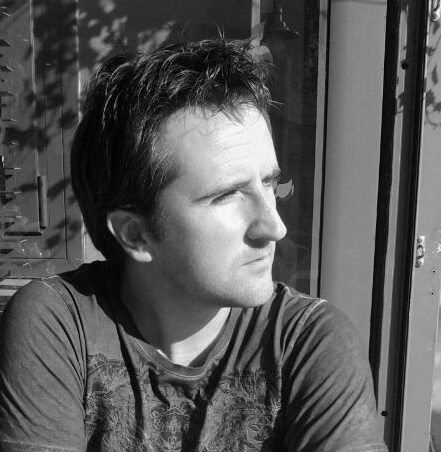[dropcap style=”font-size:100px;color:#992211;”]B[/dropcap]ehind the story of popular music since the 1950s, there’s the story of the rise of ‘the beat’. The living heart of the western world’s popular music is the unit of sound that provokes the tapped foot, the head-nod, the handclap. It’s so ubiquitous we just accept that a song, by default, has a beat. Much is made of the speed of musical evolution, the idea that the walls have exploded and we can see through into near-unlimited possibility… And it’s a lie. Far from being a celebration of freedom and rebellion, the majority of music is a pledge of allegiance to regimentation, regularity and predictability. Music has multiple parameters—timbre, melody, dynamics, texture, harmony, form, text—but one now dominates above all others: rhythm, the structuring of beats.
My concern with ‘the beat’ congealed around the title of the compilation Tyranny Of The Beat released on Mute sub label The Grey Area in 1991. That phrase has played in my head ever since, ‘the beat’ as an imposition and as something arbitrary and oppressive; it was a great title. Of course the music on the compilation couldn’t fail to disappoint; I desired revolution and instead I found a restatement of how inescapable the beat was. There were glimpses of other possibilities—SPK’s “Inflagranto Delicto”, Non’s “Cruenta Voluptas”, Monte Cazazza’s “Candy Man”—but even the much vaunted wreckers of civilisation such as Throbbing Gristle weren’t running from the basic scaffolding so much as building it with uglier equivalents. I became hyper-aware of rhythm straitjacketing music into cookie-cutter shapes.
“Most people are using 4/4 rhythms, pretty much standard stuff worldwide which is eerie—why not try a track in 6/8? Why not try some crazy time signatures? There was a lot of resistance to what I was doing; it was warfare! It was incredible how much bitter anger was levelled at me just because I was doing something different.” DJ Spooky discussing the reaction to his album Songs of a Dead Dreamer
The overused cliché of the heart as ultimate beat seemed crucial. The shared communion provoked by rhythm is regularly held up as a celebration of life which makes sense given the presence of a heartbeat is the most audible indicator of that life. To me, however, the reverse is unmistakably true, that the heart taps out decline and marks a permanent awareness of terminal end. What disturbed me was the idea that even in moments of joy, of blissful forgetfulness lost to sound, there was a subconscious seeking out of a countdown, the amplified drop of each grain of sand to the bottom of life’s hourglass. From the time we’re born and that most intimate mark of life, a pulse, commences, children are saturated in the beat. Handclaps, the most vestigial beat form, are a core element of child-rearing, reinforced at nursery, carried on into school; every child has the beat element drilled in. There are few incentives to escape given its dominance across all the sound channels of a child’s daily life: advertising jingles and TV themes calling for attention, radio or stream masking randomness or filling silence, car stereos bumping by. The beat becomes unquestioned; we forget it’s an active choice or something we could reject.
The idea that children mature into adults is relevant, true and also deceptive. The vast popularity among adults of children’s books or films—Tolkien, Harry Potter—is an expression of the comfort we derive when we embrace elements of our youth and is now the most popular cultural industry on Earth. It’s simply easier to replay what we already know than to try something new. Even more starkly, parenthood erases an adult’s exploratory space and replaces it with a reprise of childhood. While the child is the recipient to whom the re-enactment is delivered, the parents, as educators and entertainers, are entirely integrated and in fact sing the songs and perform the actions more times than the kids. It comes easy because it’s a repetition of the patterns one’s own parents, carers and teachers bequeathed. Having spent the majority of our childhoods internalising the beat it’s unsurprising that the limited free space available to adults is equally dominated by that same sound element.
Read Tyranny of the Beat Pt. II here

Nick Soulsby is the author of several books on Nirvana, Sonic Youth and Swans.



















